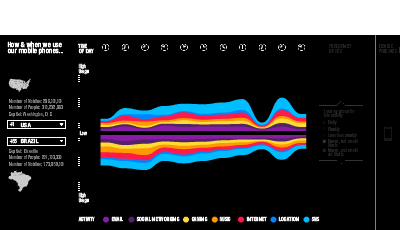One of the points that we tried to get across in our BibleTech presentation is that there are several layers to mobile life that need to be understood if mobile ministry initiatives are going to meet with any success. Part of understanding those layers is indeed the relationship between mobile and faith. Another perspective of the layers of mobile life comes from the marketing and analytic fields.
For example, the results of a mobile life survey by TNS Global Marketing displays some of what could be understood from following, or not following trends in mobile.

See this in more detail along with other visualizations of the Mobile Life survey data from TNS’s Mobile Life website.
Just as important as these observations are, understanding mobile living also has to be considered from the viewpoint of what’s happening on the ground. There’s not as much data from those areas, so we are good to rely on reports such as Mobile Active’s How Small World News Trains Citizen Journalists and Captures Footage from Libya and the book Where Are You Africa?
Trends analysis (such as this one recently posted at Wireless Week) helps to get an idea of where to focus towards, and also where to look for those spaces where data is or can be best interpreted. You don’t base products or initiatives on those trends though. Trends – like prophetic versus in Scripture – need to be interpreted in light of the context in which they are given. And especially with some mobile trends’ data, you will want to get below the high-gloss level of trends to what’s actually happening as we talked about in the items above. That said, you can do a lot worse than Chetan Sharma‘s data – his work in this space is really well founded.
For mobile to be better utilized, this kind of research and data is needed. And from these efforts can sprout the kinds of insights that enable people to engage mobile not just as a layer to their lives, but as a wand to create better lives for themselves and others.